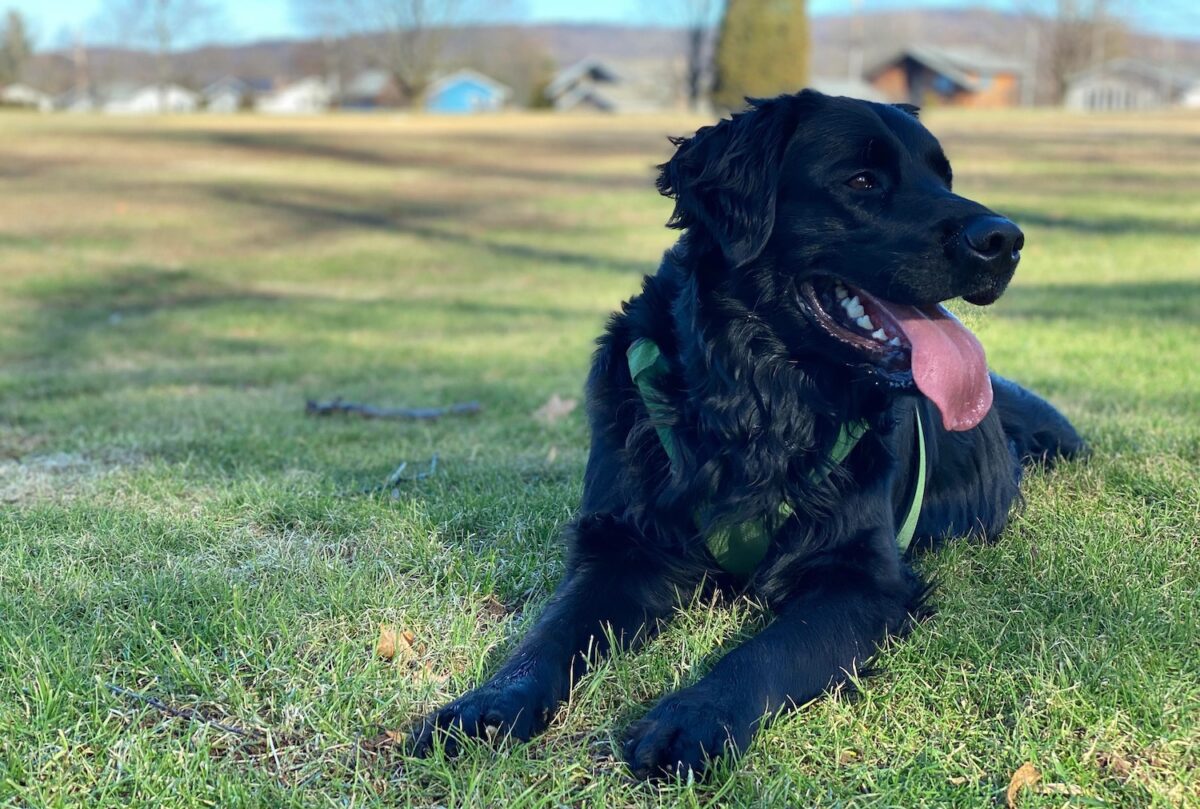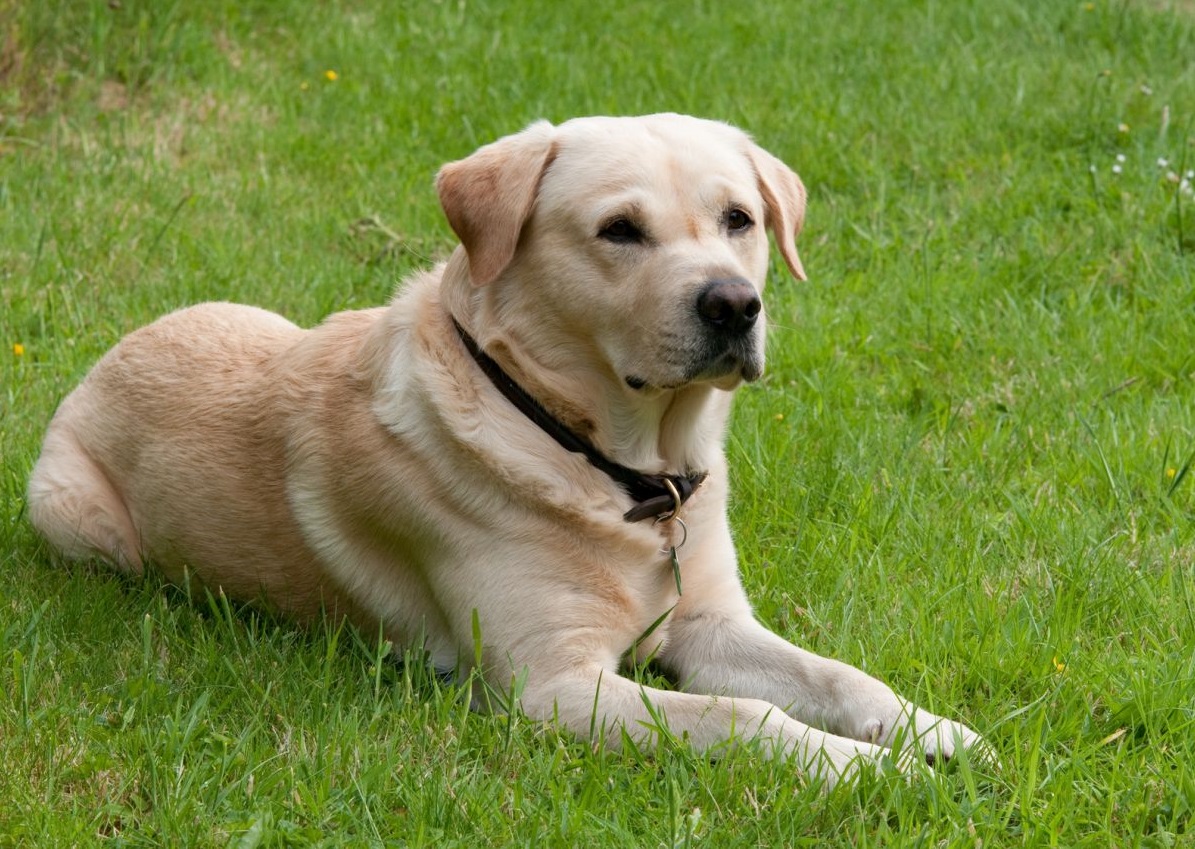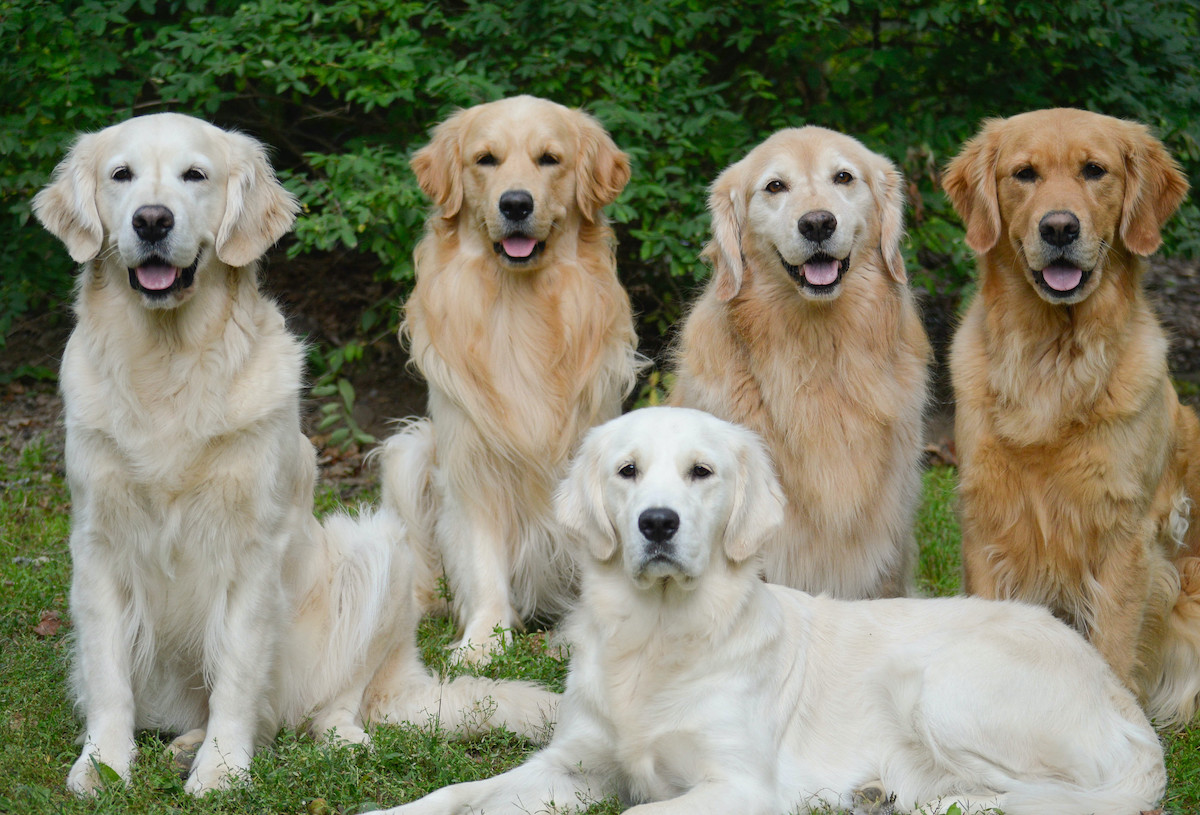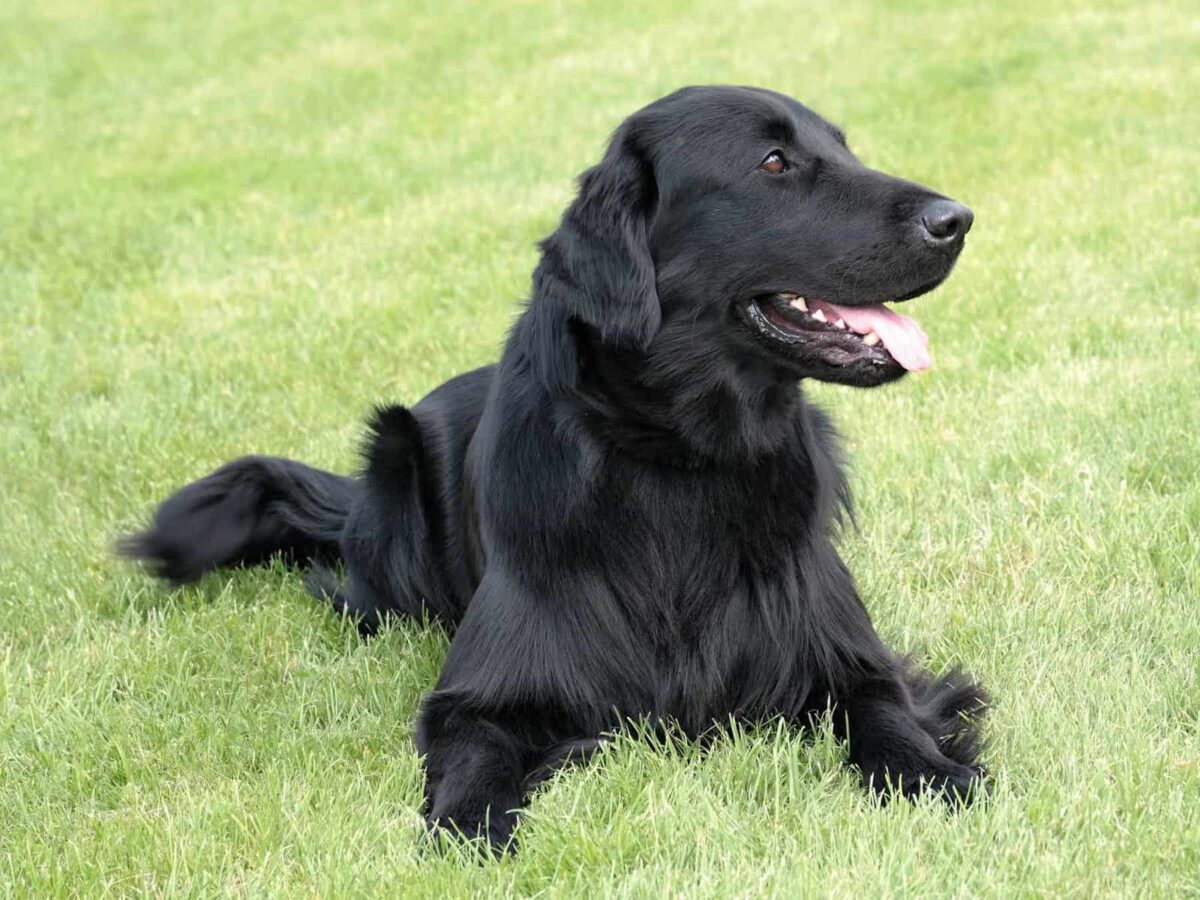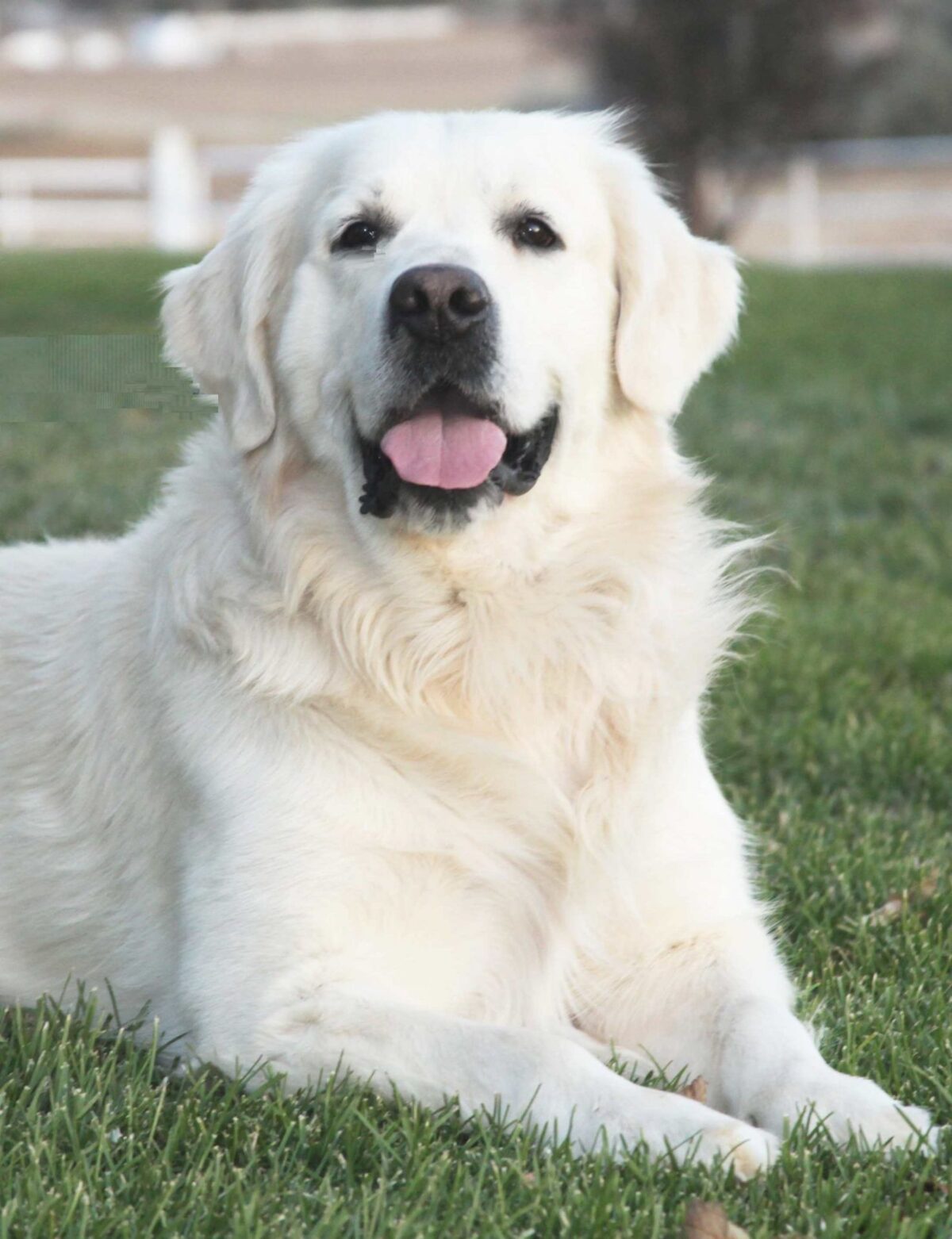Golden Retriever Black Lab Mix: Complete Guide to the Golador Dog
Introduction
The Ultimate Guide To Golden Retriever Black Lab Mixed Breed Dogs
Have you ever seen a Golden Retriever Black Lab Mix? Want to learn more about this amazing mixed breed of Golden Retriever and Back Lab Mixed Breed Dog? Read on to learn all about Golador Dogs!
Are you looking for a furry companion that combines the best of two beloved breeds, labradors and golden retrievers? Look no further than the Goldador! This popular designer breed is a delightful mix of a Golden Retriever and a Black Labrador, resulting in an irresistible canine companion. With their friendly and outgoing nature, Goldadors from reputable breeders make excellent family pets. These adaptable puppies thrive in various living environments, whether it’s a spacious suburban home or a cozy city apartment. Their gentle and affectionate temperament makes them ideal for households with children or other pets. Whether you’re after a playful golden labrador puppy or a loyal adult goldador dog, the Goldador offers endless love and companionship. So why wait? Discover the joy of owning a purebred Goldador today!
Characteristics and traits of a Goldador:
The Golden Retriever Black Lab Mix, also known as the Goldador, is a delightful hybrid breed of purebred dog that combines the best qualities of both popular dog breeds, golden labrador retrievers and black labradors. This article explores the characteristics and traits that make this crossbreed so popular among dog enthusiasts who appreciate purebred dogs, mixed breed puppies and designer dogs.
Intelligence and Retrieving Instinct
One of the standout features of the black Goldador is its intelligence. With genes inherited from both the Golden Retriever and black Labrador Retriever, these designer breeds possess remarkable cognitive abilities. They are quick learners and excel in training activities. If you’re looking for black purebred dog or labrador or golden retriever breed puppies, consider the black Goldador as a smart and trainable option.
However, it’s their retrieving instinct that truly sets purebred golden retrievers and purebred golden retriever and mixes apart from hybrid dogs. Thanks to their Labrador heritage, these dogs have an innate desire to retrieve objects. Whether it’s a ball or a stick, they will eagerly fetch it for you time and time again. This makes them excellent companions for outdoor activities like playing fetch or participating in agility trials.
Size and Build
Goldadors, also known as golden labrador mixes, typically fall into the medium to large size range, with males generally being larger than females. They have a muscular build that gives them an athletic appearance. Their strong physique enables them to engage in physically demanding tasks without tiring easily. These qualities are similar to those of purebred golden retrievers and golden labradors.
Coat Colors and Texture
One notable aspect of Goldadors, a popular hybrid dog breed that combines Labrador Retriever and Golden Retriever, is their beautiful coat color. The coat color can come in various colors due to their mixed lineage, including black, golden, chocolate brown, or cream-colored variations same double coat. Regardless of coat color, all Goldadors boast a dense double coat that provides protection against varying weather conditions.
Affectionate Nature
Golden retrievers and golden Labrador retriever mixes, also known as Goldadors, are renowned for their affectionate nature towards humans great family dog. They thrive on human companionship and enjoy being part of family activities. These dogs form strong bonds with their owners and are known for their loyalty to their families.
Golden retrievers, golden labradors, and labrador retrievers are often utilized as therapy dogs to provide emotional support to individuals in hospitals or nursing homes. With their gentle temperament and intuitive nature, these golden and labrador retriever mixes and rescue dogs have a knack for brightening up people’s lives.
Training tips for a Golden Retriever Lab mix:
Training a Labrador, or Goldador puppies, can be an exciting and rewarding experience. These intelligent and friendly mixed breed dogs are known for their loyalty and versatility, making them excellent companions, therapy dogs, and even bomb detection service dogs too. To ensure your black Goldador puppy grows up to be well-behaved and obedient, follow these essential training tips.
Utilize positive reinforcement techniques during training sessions
Positive reinforcement is key when training labrador retrievers, black lab golden and purebred labrador retriever mixes, and even purebred golden and labrador retriever mix, and labradors. These goldador puppies respond best to praise, rewards, and treats rather than punishment or harsh methods. When they exhibit the desired behavior, whether it’s sitting on command or walking nicely on a leash, reward them with verbal praise or a tasty treat. This positive association will motivate them to repeat the behavior in the future.
During training sessions with your black goldador puppy, use short and frequent sessions to keep your labrador lab golden retriever mix both engaged and focused. Break down commands into simple steps and gradually increase difficulty as they progress. Consistency is crucial – always use the same cues for each command so that your puppy learns to associate specific words or gestures with certain actions.
Start training early to establish good behavior habits
Early socialization and training are vital for Labrador Golden Retriever Lab mixes, also known as Goldador dogs. Begin as soon as you bring your puppies home to establish good behavior habits from the start. Introduce them to various environments, people of different ages, other animals, sights, sounds, and smells.
Expose your a labrador retriever mix puppy to new experiences gradually while ensuring they feel safe and supported. This will help prevent fear-based aggression or anxiety later in guard dog in life. Enroll your black or labrador retriever parent or golden retriever mix pup in puppy classes where they can interact with other dogs under the guidance of a professional trainer.
Focus on socialization to ensure they are comfortable around people and other animals
Golden Retriever Labrador mixes, also known as black golden retriever lab mix. Goldador puppies, are a sociable breed. However, proper socialization is still necessary to ensure they grow up well-rounded and comfortable around large dogs, people and other animals. Arrange playdates with friendly dogs, invite friends over to meet your black golden retriever lab mix and parent Goldador puppy, and expose them to different environments such as parks or busy streets.
Teach your own labrador golden retriever mix puppy appropriate behavior when meeting new people or dogs. Encourage calm greetings and discourage jumping or excessive excitement. Use positive reinforcement to reward good behavior during social interactions with your black and labrador retriever parents or labrador golden retriever mix.
Incorporate mental stimulation activities, such as puzzle toys, to keep them engaged
Golden Retriever Labrador mixes, also known as black Goldadors, are a breed of active dogs that thrive on both physical exercise and mental stimulation. Keep their minds engaged by incorporating puzzle toys, interactive games, and training exercises that challenge their problem-solving abilities. For more information on this breed service dog, visit our website.
Hide treats around the house for your labrador or mixed breed dog to find or invest in treat-dispensing toys that require them to figure out how to access the rewards. Engage in scent work activities where they can use their keen sense of smell to locate hidden objects or treats. Mental stimulation with dry dog food will not only tire them out but also prevent boredom-related behaviors like chewing on furniture or excessive barking.
Training a black Goldador, a hybrid dog breed of Labrador and Golden Retriever, requires patience, consistency, and positive reinforcement techniques. Start early, focus on socialization, provide mental stimulation activities, and watch your furry friend grow into a well-behaved and happy companion. With time and dedication, you’ll develop a strong bond with your black Goldador that will last a lifetime.
Remember: Training your golden retriever labrador mix, black goldador, or black one golden retriever parent, labrador mix or one golden retriever parent should always be fun for both you and your dog!
Health care and issues for a Goldador:
Regular veterinary check-ups are crucial for preventive care in a Goldador cross breed too. Just like any other dog, a Goldador, which is a mix of a black lab and golden retriever, requires regular visits to the veterinarian for their overall health and well-being. These check-ups allow the vet to detect any potential health issues early on, increasing the chances of successful treatment and preventing further complications.
Common health concerns for a Goldador, a popular dog breed, include hip and elbow dysplasia, ear infections, and obesity. Hip dysplasia is a condition where the hip joint doesn’t develop properly, leading to discomfort and mobility issues. It’s important to keep an eye out for signs of elbow dysplasia, such as difficulty walking or running, bunny hopping, or reluctance to climb stairs. If you notice any of these symptoms, consult your vet immediately for more information.
Ear infections can also be a common problem for Goldadors due to their breed’s floppy ears that can trap moisture and create an ideal environment for bacteria or yeast growth. Regularly inspect your Goldador’s ears for redness, swelling, discharge, or foul odor. If you notice any abnormalities or if your dog frequently shakes its head or scratches its ears excessively, it may indicate an infection that requires veterinary attention. Stay informed with the latest breed information.
Obesity is another significant health issue that affects many dogs, including Goldadors. Maintaining a healthy weight is essential to prevent various health problems such as heart disease and joint issues in this breed. Provide your Goldador with appropriate exercise based on their age and energy level. Regular walks, playtime in the yard, or trips to the dog park can help keep them active and mentally stimulated, providing them with the necessary physical activity for their breed.
Maintain proper dental hygiene through regular brushing for your Goldador breed. Dental care is often overlooked but plays a crucial role in your Goldador’s overall health. Brushing their teeth regularly helps remove plaque buildup and prevents gum disease which can lead to tooth loss and other systemic health problems. Use a dog-specific toothbrush and toothpaste recommended by your veterinarian for the best information.
In addition to dental hygiene, providing appropriate nutrition is vital for your Goldador’s well-being. Consult with your vet to determine the best diet for your dog based on their age, weight, and any specific health concerns. A balanced diet that includes high-quality protein, healthy fats, and a variety of fruits and vegetables will help healthy dog support their immune system and maintain optimal health.
Taking care of a Goldador’s health involves being proactive and attentive to their needs. Regular veterinary check-ups for your dog, awareness of common health issues such as hip dysplasia and ear infections in dogs, proper dental hygiene for your dog, and providing appropriate exercise and nutrition for your dog are all essential components in ensuring a happy and healthy life for your beloved Golden Retriever Black Lab mix.
So remember, keep an eye out for any signs of health problems in your black goldador dog, schedule regular vet visits for your black goldador, brush those teeth regularly for your black goldador, provide a balanced diet for your black goldador, and give them plenty of exercise to keep your black goldador in tip-top shape!
Exercise and activity requirements for a Goldador:
Goldadors, the delightful mix of Golden Retrievers and Black Labs, are known for their high energy levels and love for physical activities. To keep these energetic dog pups happy and healthy, it is crucial to provide them with enough exercise and mental stimulation. Here’s what you need to know about meeting their exercise needs.
Engage in daily physical exercise like brisk walks or playtime in an open space
Black Goldadors thrive on regular physical exertion, making daily exercise a must for this dog breed. Taking them for brisk walks not only helps burn off excess energy but also provides an opportunity for them to explore their surroundings. These walks can be made even more exciting by taking different routes or visiting new places.
Playtime in an open space is highly beneficial for black Goldadors. Their black retriever instincts kick in when they have the chance to fetch a black ball or Frisbee. This not only satisfies their natural urge to retrieve but also keeps them mentally stimulated.
Enjoy activities that involve retrieving, swimming, or running
As a mix of two incredibly athletic breeds guard dog, Goldadors love activities that allow them to showcase their skills. Playing fetch with black tennis balls or other black toys specifically designed for dogs is an excellent way to engage them physically while tapping into their innate retrieving abilities.
Swimming is another fantastic activity that black Goldadors thoroughly enjoy. With their webbed paws inherited from both parent dogs and breeds, they are natural swimmers. Whether it’s at the beach or in a pool, swimming provides low-impact exercise that is gentle on their joints while still giving them a full-body workout. The black dog breeds are especially fond of swimming due to their natural abilities.
Running is yet another option to consider if you have an active lifestyle with your black dog. Black Goldadors make great jogging partners as they possess the endurance required to keep up with your pace.
Mental stimulation is equally important; consider interactive toys or obedience training
While physical exercise plays a vital role in keeping black Goldadors happy, mental stimulation is equally essential for their overall well-being. Engaging their minds helps prevent boredom and destructive behaviors that can arise from excess energy in dogs.
Interactive toys, such as puzzle feeders or treat-dispensing toys, are excellent tools to challenge a black dog’s problem-solving abilities while providing entertainment. These toys require the black dog to figure out how to obtain the hidden treats, keeping them mentally engaged for extended periods.
Obedience training is another effective way to provide mental stimulation for your black dog. Teaching them basic commands like sit, stay, and fetch not only strengthens the bond between you and your black Goldador but also stimulates their cognitive abilities. Consider enrolling them in obedience classes or working with a professional black dog trainer to ensure they receive proper guidance.
Be mindful of their energy levels as they may require more exercise than some other breeds
It’s important to note that black Goldadors have higher activity levels compared to many other dog breeds. Due to their genetic makeup, they often possess an abundance of energy that needs regular outlets. Failing to meet their exercise requirements can lead to restlessness, anxiety, or even destructive behavior.
To ensure your black Goldador dog remains content and well-adjusted, be prepared to dedicate a significant amount of time each day for physical activities and mental stimulation. Regular exercise not only keeps them physically fit but also contributes significantly to their overall happiness and well-being.
Grooming needs of a Black Lab Golden Retriever mix:
Grooming plays a vital role in maintaining the health and appearance of your beloved Black Lab Golden Retriever mix dog. This unique crossbreed inherits the beautiful double coat from both parent breeds, which good guard dog requires regular care to keep it looking its best. Let’s delve into the grooming requirements for your furry pooch.
Regular Brushing to Minimize Shedding
One of the essential grooming tasks for a Black Lab Golden Retriever mix is weekly brushing. Due to their double coat, these dogs are prone to shedding, especially during seasonal changes. By brushing their coat regularly, you can minimize loose hair around your home and prevent mats or tangles from forming.
To effectively brush your black goldador’s coat, use a slicker brush or an undercoat rake. These tools are designed to remove loose hair and distribute natural oils throughout the fur of your dog. Start at the base of their neck and work your way down towards their tail, paying extra attention to areas where matting is common, such as behind the ears and underbelly.
Cleaning Their Ears Regularly
Another important aspect of grooming a Black Lab Golden Retriever mix is cleaning their ears regularly. These dogs have floppy ears that can trap moisture and lead to wax buildup or infections if not properly maintained.
To clean your black goldador’s ears, gently wipe them with a damp cloth or use an ear-cleaning solution recommended by your veterinarian. Avoid inserting anything into their ear canal to prevent injury. If you notice any redness, swelling, or discharge in your dog’s ears, consult your vet for further examination.
Bathing When Necessary
While these black goldadors, mixed breeds of Labrador Retrievers and Golden Retrievers, have water-resistant coats that repel dirt and debris naturally, occasional baths are still necessary when they get dirty or start emitting unpleasant odors. Use a dog-friendly shampoo that suits their skin type and coat color.
When bathing your Black Lab Golden Retriever mix dog, ensure you thoroughly wet their coat and lather the shampoo gently. Rinse them well to remove all traces of shampoo, as any residue left behind can cause skin irritation. After bathing, towel dry or use a blow dryer on low heat to prevent their coat from staying damp for too long.
Regular Nail Trimming
Proper nail care is crucial for your furry friend’s comfort and overall well-being. Black Lab Golden Retriever mixes are active dogs that naturally wear down their nails to some extent. However, regular nail trimming is still necessary to maintain an appropriate length.
When trimming your black goldador’s nails, be cautious not to cut too close to the quick, which may cause bleeding and discomfort. If you’re unsure about how much to trim, consult a professional groomer or veterinarian for guidance. Alternatively, you can use a grinder or file to gradually shorten your dog’s nails while minimizing the risk of accidental injury.
By following these grooming tips and incorporating them into your routine, you can ensure that your Black Lab Golden Retriever mix stays clean, comfortable, and looking their best. Remember that each dog is unique in terms of their grooming needs, so it’s essential to observe your pet closely and tailor your approach accordingly.
Socialization and interaction with a Goldador:
Also known as a Goldador, early exposure to various environments, people, and animals is crucial for socializing and interacting with large dog and with your black Goldador. This helps them develop into well-rounded and confident dogs. Here are some key points to consider when it comes to socializing and interacting with large dog breeds and your black Goldador.
Expose them to various environments, people, and animals from an early age
To ensure your black Goldador dog grows up to be comfortable in different situations, it’s important to expose them to various environments, people, and animals from a young age. Take them on walks in different neighborhoods, visit parks or beaches where they can encounter new sights and sounds. Introduce them gradually to different types of people – children, adults, strangers – so they learn how to interact appropriately.
Encourage positive interactions with other dogs through supervised playdates
Goldadors are generally friendly and sociable dogs. To foster their natural inclination towards being good around other dogs, organize supervised playdates with friendly canines. These interactions allow your Goldador puppy to learn appropriate doggy manners such as sharing toys and respecting personal space. Positive experiences during these playdates will help shape their behavior as they grow older.
Teach them proper behavior around children and strangers
Given their friendly nature, Goldadors usually do well around children if properly trained. Teach your Goldador puppy how to behave gently around kids by using positive reinforcement techniques such as treats or praise when they exhibit calm behavior. Similarly, guide them on appropriate behavior around strangers by encouraging polite greetings without jumping or excessive excitement. Having a well-trained dog is important for their interactions with children and strangers.
Provide opportunities for mental stimulation and social engagement
Goldadors have both Labrador Retriever and Golden Retriever heritage which means they are intelligent dogs that thrive on mental stimulation. Engage their minds by providing puzzle toys or interactive games that challenge their problem-solving abilities. Enroll them in obedience classes or agility training to keep them mentally and physically active. These activities not only provide mental stimulation but also offer opportunities for social interaction with other dogs and owners.
Shedding, bathing, and grooming
Goldadors have a dense double coat inherited from both parent dogs and their parent breeds themselves. This means they shed moderately throughout the year and heavily during seasonal changes. Regular brushing is essential to minimize shedding and keep their coats healthy. Plan on giving your Goldador a bath every few months or as needed, using dog-specific shampoo to maintain their cleanliness and prevent skin issues.
Conclusion
In conclusion, the Golden Retriever Black Lab mix, also known as the Goldador, is a wonderful and versatile dog breed. This crossbreed combines the intelligence and loyalty of both the Golden Retriever and the Labrador Retriever, making it an almost hybrid dog and excellent choice for families and individuals alike.
The Goldador inherits many desirable characteristics from its parent breeds. It is known for its friendly nature, adaptability, and eagerness to please. Whether you’re a dog walker looking for a loyal companion or a working dog, the Goldador can fit into various roles with ease.
Training a Golden Retriever Lab mix requires consistency and positive reinforcement. These dogs are highly intelligent and respond well to reward-based training methods. With patience and dedication working dog enough, you can teach your Goldador basic commands and even advanced tricks.
Regular veterinary check-ups are essential to ensure your dog, the Goldador, remains in good health. Like any other breed, Goldadors may be prone to certain health issues such as hip dysplasia or obesity. By providing proper nutrition, exercise, and preventive care, you can help your Goldador lead a happy and healthy life.
Goldadors, a popular dog breed, have moderate exercise needs that should be met through daily walks or play sessions. They thrive on physical activity and mental stimulation. Engaging them in interactive games or activities like retrieving can keep these dogs mentally sharp while also providing the necessary physical exercise.
Grooming requirements for a Black Lab Golden Retriever mix dog are relatively low maintenance. Their short coats only require occasional brushing to keep them clean and free of loose hair. However, during shedding seasons, more frequent brushing may be necessary to manage their heavy shedding.
Socialization is crucial for Goldadors as they are naturally sociable dogs that enjoy human interaction as well as interactions with other animals. Exposing them to different environments, people, and animals from an early age helps ensure they grow up to be well-rounded dogs.
In conclusion, the Golden Retriever Black Lab mix, or Goldador, is a fantastic choice for those seeking a loyal and versatile dog companion. By understanding their dog characteristics, training them effectively, providing proper dog health care and exercise, and ensuring they receive adequate dog socialization, you can enjoy a fulfilling relationship with your Goldador.
FAQs
1. Are Goldadors good with children?
Yes, Goldadors are generally great with children. They are known for their friendly and gentle nature, making them excellent family pets. Goldadors are a popular choice for families looking for a dog that is good with young kids too.
2. Do Goldadors require a lot of exercise?
Goldadors, a popular dog breed, have moderate exercise needs. They benefit from daily walks or play sessions to keep them physically and mentally stimulated.
3. Can I leave my Goldador alone for long periods?
Goldadors, a mix between Golden Retrievers and Labrador Retrievers, are known for their sociable nature and strong need for human interaction. These dogs may develop separation anxiety if they are left alone for long periods of time. To prevent this, it is important to provide them with companionship or mental stimulation when you are away.
4. How often should I groom my Goldador?
Goldadors, a popular dog breed, have short coats that only require occasional brushing to remove loose hair. However, during shedding seasons, more frequent brushing may be necessary to manage their heavy shedding.
5. Are Goldadors suitable for first-time dog owners?
Yes, Goldadors can be an excellent choice for first-time dog owners due to their friendly nature and trainability. However, it’s important to invest time in training and socialization to ensure they develop into well-behaved dogs.
Remember that each individual black goldador dog may vary in temperament and behavior regardless of breed or mix.

